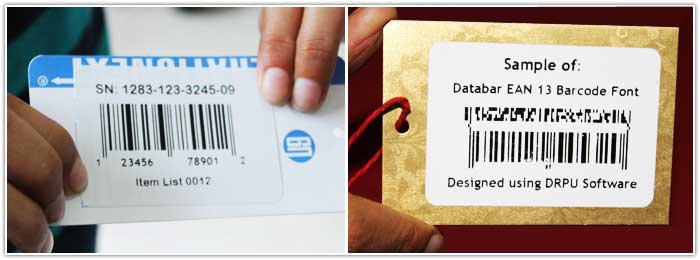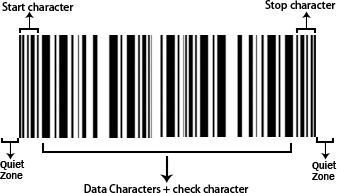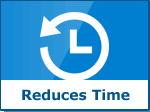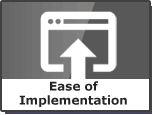About Barcode
When you purchase any item from store you can see some set of black and white pattern with different numbers and characters. These arrangements of lines and spaces are called barcode. Barcodes are of two types Linear Barcodes (store data in horizontal direction) and 2D barcodes (store information in both horizontal and vertical direction). You can see barcode in retail products, food items, books and magazines, medical equipments, shipping labels etc. Barcode helps you to keep accurate information about retail goods, item price, financial data and other important business details.

Barcode is sequence of narrow and wide bars that represents data related to product. Wide and narrow lines of barcode can be scan through barcode scanner. The scanner reads the barcodes data and converts it into signal which is then sent to computer machine. Some common barcode symbologies are UPC/EAN, Interleaved 2 of 5, Codabar, Code 39, Aztec, Databar, MaxiCode, MICR barcode font etc
Structure of Barcode:
Different types of barcode symbologies have different structure to represent data.
Some linear barcode font consists of five parts which are: Quiet Zone, Start character, Data character, Stop character, another quiet zone E.g. Code 39, Code 128, Telepen etc.
- Quiet Zone
- Start Character
- Data Characters (including an optical check character)
- Stop Character
- Another quiet zone

Benefits of Barcodes

Barcode increase the business process speed with check out and list out ability of hundred or more products in minutes. This barcode characteristic help businesses to achieve better outcomes from their business modules like: distribution, tracking etc. There is no need to manually check out all the items in an inventory system.

Data integrity is assured with the use of barcodes because there is no error or human interaction while entering data into the system with help of a barcode scanner. The encoded data in barcode is automatically transferring to the inventory management systems after putting the scanner to the front of a barcode.

Every second in a business is most important to reach the heights. Users can master the use of hand held barcode scanners in several minutes, start scanning barcodes and get all product related details in less time. After the successful implementation of barcode system all the incoming or outgoing packages can automatically be scanned and information can be stored in computer systems.

Barcodes are easy to implement and use than any other tracking method out there. You can print a barcode with barcode software and apply it to the product you want to track time to time. A handheld barcode scanner can easily scan all inventory items easily.

Barcodes are affordable for almost every organization due to inexpensive equipments. Barcode scanning lower your employee training time and efforts to help in better productivity. Barcode helps you give update about what product present in your inventory with quantity, technology identify is there any need to order extra products or not to maintain and reduce cost significantly.
Type of information encoded in barcode
The information encoded in barcodes depends upon which type of barcode symbology is used. Different barcode symbologies are used to encode different types of data. Some barcodes symbology encodes only numeric data while the other barcodes symbology encode alpha numeric characters, all ASCII Characters, special characters, punctuations, texts, URLs etc.